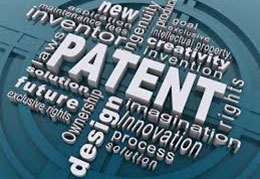
Patents
Patents
The patent system provides legal protection for inventions and innovations. This makes it possible to actually make your new, inventive product your own. Others are not permitted to make any money from your invention without your consent.
Protect your invention
When a promising new product is launched, the new player faces strong resistance. Established parties do not want their profitable position or a monopoly to be weakened by a newcomer. It is therefore important to apply for a patent in good time.
European patent
You can apply for a national patent at a patent office in an EU country and a European patent at the European Patent Office. A European patent does however have to be confirmed by the national patent office of each country in which you wish to protect your patent.
Financiers
A patent attracts financiers and thus enables your business to grow. Investors know that a company that properly protects its own inventions has a much better chance of survival than one that has not registered its intellectual property. A patent forms the basis of your future.
Requirements
To qualify for patent protection you must have produced a technical invention. A technical invention is a product or process in all areas of the technology. The invention must meet three material conditions:
- Newness
The product or process must not have been publicly known anywhere in the world prior to the date of filing the patent application, also not through the doing of the inventor himself (e.g. with a company brochure or presentation at a trade fair). - Inventiveness
Your invention is a resourceful solution and must not be self-evident to an expert. Take a different attachment method, for example. Instead of welding the tubes of a swing to each other, they can also be screwed together. This may be a new method for swings, but it is self-evident to an expert: this method cannot be patented! - Industrial applicability
The invention is a product or manufacturing process that can be realised by technical means. You can apply for a patent for a new type of playing card that makes it easier to hold the cards, but not for an idea for a new card game.
Period of validity
A patent protects your invention for up to 20 years. During that period competitors cannot copy or use the technology for commercial purposes. That makes it possible for you to recoup your development investment. By issuing patents the government makes it worthwhile for companies to continue innovating.
Database patents
Once the Patent Office has granted a patent the technology is disclosed in the patent databases and registers. Companies can check here whether the technology they plan to develop is already patent-protected by a competitor. In some cases entrepreneurs use the information to find out which competitors are already doing research and development on a certain technology. In the patents databases you will find all publications of patent applications and approvals, including text and drawings. The patent registers show whether a patent is still valid and operational in a particular region.
International
There are several international agreements on copyrights, including:
- The Berne Convention, 1886
- Universal Copyright Convention, 1952
- WIPO Copyright Treaty,1996
Specific parts of the copyright are also provided for in a large number of conventions, including the European Directive on Copyright Protection for Software and the European Directive on Related Rights. These are rights related to copyright.
Copyright symbol or indication
Adding a copyright symbol © or the word copyright generally does not affect the protected status. This type of reference comes from the United States, which did not become a signatory to the Berne Convention until 1989 . Until 1989 there was no legal copyright in the United States, which made such reference necessary. It is permissible to state copyright, e.g. to inform consumers or users.
Copyright
Copyright is the right of the creator or party entitled to a work of literature, science or art in order to stipulate how, where and when the work can be published or reproduced. The copyright is legally established in many countries as a result of the Berne Convention (1886). Nothing has to be deposited or registered.
Transfer of copyright
The copyright on a creation can be transferred to another person or organisation, such as a publisher, broadcaster or theatre company. This is usually done for a fee. The copyright must always be transferred in writing. Since 1 July it has also been necessary to issue an exclusive written licence.
Related rights
Related rights are rights to the work of performing artists (e.g. musicians, actors and dancers), record companies, film producers and broadcasting organisations. The protection of related rights is similar to that under copyrights.
Management of rights
It is impossible for artists and authors to keep track of who uses their work and what for. They are able to use the services of a collective management organisation for copyright and related rights.
Downloading from illegal sources prohibited
Films, games, music and other works under copyright may only be downloaded from legal sources. Legal sources are in practice mostly legitimate websites. Downloading from illegal sources is not allowed, not even for personal use. The Court of Justice of the European Union issued a ruling on this subject on 10 April 2014. Since copying from an illegal source is not allowed, there is no private copying levy for these copies.
Copyright modernisation
In 2017 a start was made with the negotiations on the European proposals to reform copyright laws. The purpose of this modernisation is to create an efficient market for copyrights in which the entitled parties are able to negotiate fairly with and grant licenses to operators.
